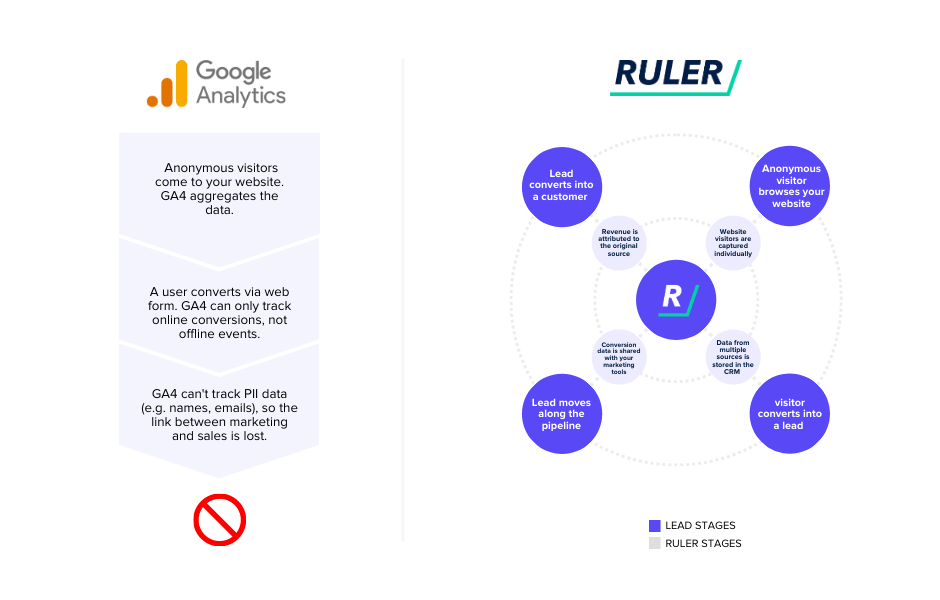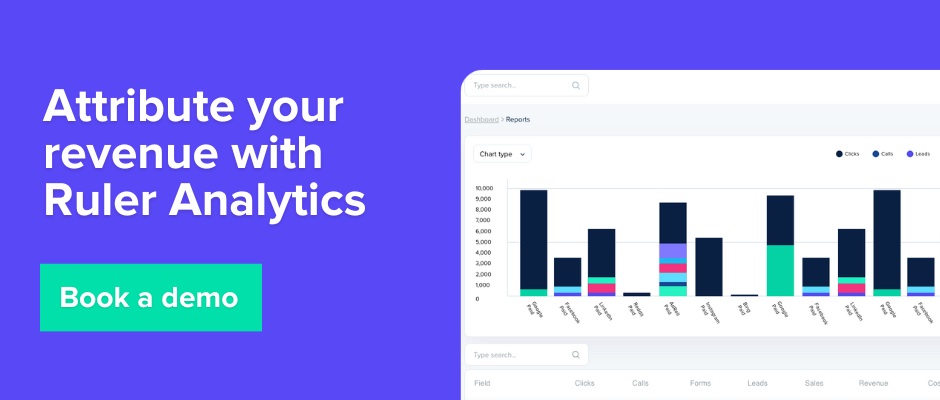Google to remove four attribution models (first click, linear, time decay, and position-based) in Google Ads and GA4 from September 2023.
There’s been plenty of buzz around Google Analytics in recent years. In 2020, Google announced it was pulling the plug entirely on Universal Analytics and replacing it with Google Analytics 4 from July 1st 2023.
Google decided to discontinue Universal Analytics to focus on a more privacy-conscious analytics tool capable enough of tracking the complex customer journeys of today’s world.
But, just as marketers were getting comfortable with the idea of GA4 as the next generation of website tracking, Google announced another major change.
Google revealed that it would be removing all the attribution models from both Google Ads and Google Analytics, except for last-click and data-driven attribution. The four models affected are:
In June 2023, Google will no longer allow users to select first click, linear, time decay, or position-based for new conversion actions in Google Ads. Then, from September 2023, Google will automatically switch any conversion actions still using these attribution models to data-driven attribution.
Google decided to sunset these attribution models to better reflect the evolving digital marketing landscape and the complex customer journeys of modern consumers.
The analytics giant claims these attribution models are no longer accurate, flexible, or able to keep up with today’s complex buying journeys.
“These models don’t provide the flexibility needed to adapt to evolving consumer journeys.
That’s why we made data-driven attribution (DDA) the default attribution model in Google Ads and Google Analytics 4,” Google announced.
Related: Data-driven attribution: Why it matters more than ever
Google Ads liaison Ginny Marvin also took the announcement to her Twitter account and released a series of tweets to explain the reason behind the update.
In the announcement, Google revealed that less than 3% of web conversions are currently attributed using first-click, linear, time decay, or position-based models. Data-driven attribution, on the other hand, is the most-used attribution model for conversions used for automated bidding in Google Ads.
Google believes this is because “it [data-driven attribution] uses Google AI to understand the impact each touchpoint has on a conversion, and when combined with auto bidding, data-driven attribution improves performance.”
After September 2023, marketers will have no choice but to choose between last click and data-driven attribution in Google Ads and Analytics to measure marketing effectiveness.
Google will automatically switch any conversion actions still using first click, linear, position based or time decay to data-driven attribution. This change will apply to both Google Ads and Google Analytics.
Marketers who don’t want to use data-driven attribution can use last-click as an alternative. However, marketers considering the switch to last-click attribution should be aware of its limitations.
Last-click attribution gives full credit for a conversion to the last channel that a user interacted with before converting. It doesn’t consider the impact of other channels that may have influenced the user’s decision to convert.
Related: Your complete guide to last-click attribution
Google’s decision to remove the rule-based attribution models has been met with mixed reactions. Some marketers have welcomed the change, while others have doubts.
Data-driven attribution is becoming increasingly popular among marketers due to its accuracy and reliability over other traditional attribution models. However, some marketers have expressed concerns about the potential loss of control over how they assign credit to various traffic sources.
Only time will tell how the changes to Google’s attribution models will impact marketers.
We would say that data-driven attribution is a more technically advanced model and definitely a step in the right direction for Google. Still, there is much left to be desired.
Google doesn’t disclose how data-driven attribution assigns credit to each channel. You have no option but to trust that the modelling is accurate in Google Analytics and Google Ads.
Plus, cross-channel journeys make it almost impossible for Google’s data-driven attribution model to accurately measure the impact of each channel on a conversion.
Any marketers relying on the soon-to-be-deprecated attribution models or cautious about Google’s data-driven attribution should consider using a third-party measurement platform with attribution.
These tools can provide more accurate and flexible attribution data than GA4’s built-in models.
Take Ruler Analytics, for example. Ruler lets you to track the path a customer takes from the first time they interact with your brand to the point where they make a purchase.

It uses a pre-built integration to send revenue from your deals back to the marketing touchpoints that resulted in the conversion. This gives back the control and allows you to model your conversions and revenue using any attribution model previously available in Google Analytics and Ads.

There’s something else you should know. Ruler is built with marketing mix modelling. That means you can see what impact your invisible touchpoints (e.g. ad views, TV impressions and radio ads) have had on your revenue outcomes and optimise accordingly.
Marketing mix modelling is becoming increasingly popular due to the challenges we face around iOS 14.5 and third-party cookie tracking.
We have plenty of content on Ruler’s marketing mix modelling, which you can find here.
Google is committed to providing its users with the most accurate attribution data possible, but there are other (and better) ways to attribute your conversions and revenue.
With Ruler’s attribution and MMM, you get a complete picture of the customer journey and how your marketing campaigns impact it. Such insight empowers your business to make data-driven decisions and allows you to optimise for maximum results.
Don’t take our word for it. Read how Embryo uses Ruler to shine a light on revenue generation for clients. Or, book a demo today and see firsthand how Ruler Analytics can level up your revenue attribution.
